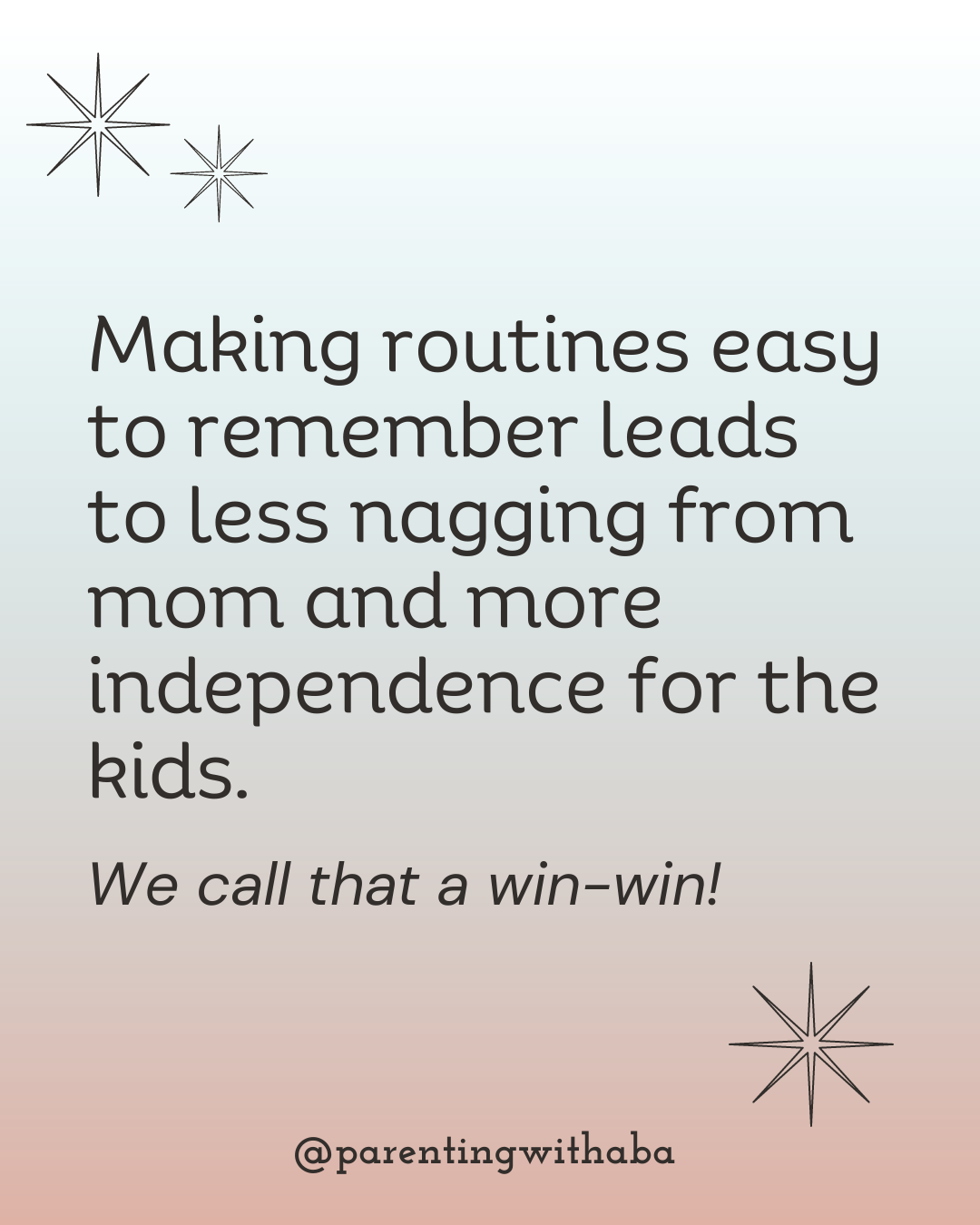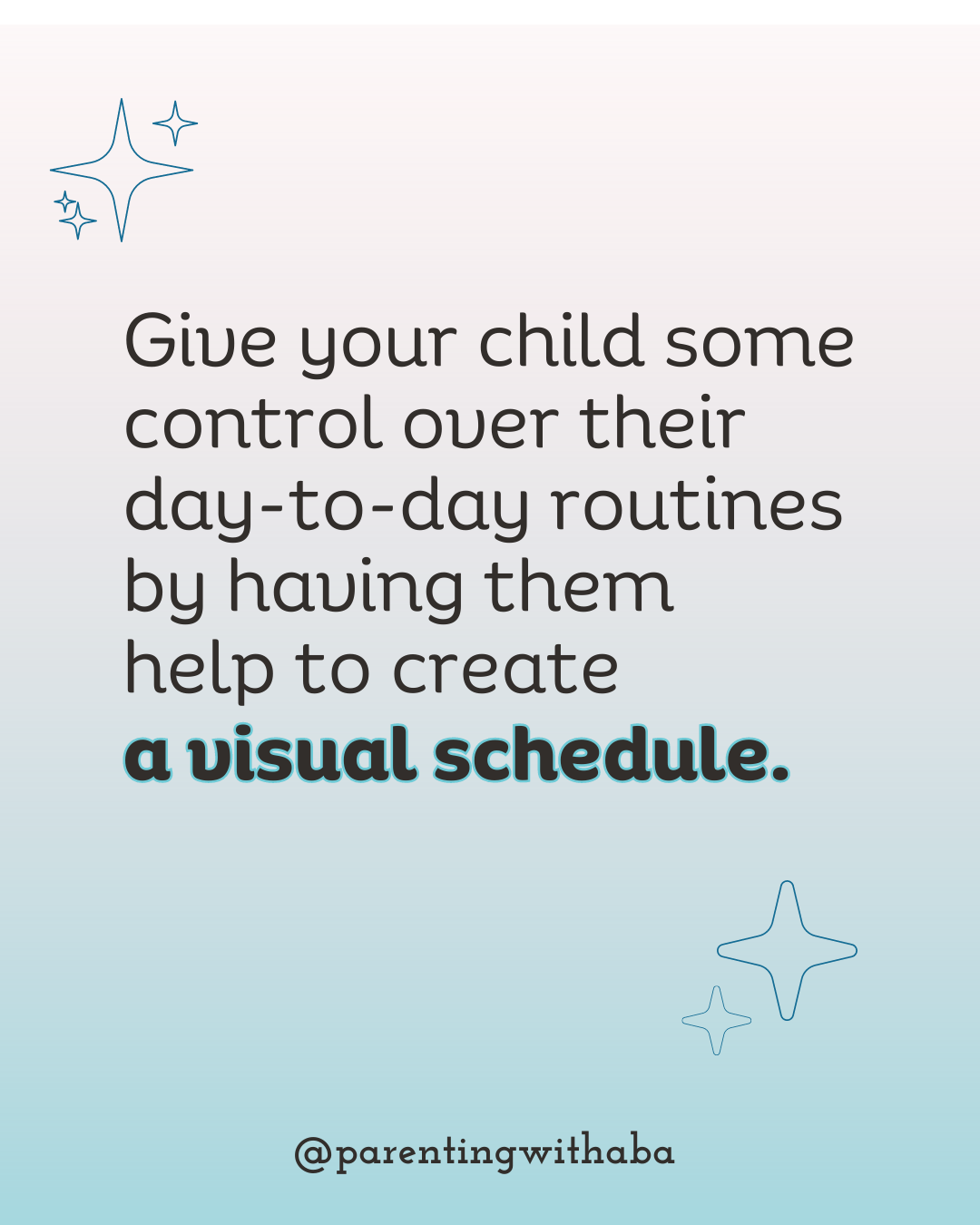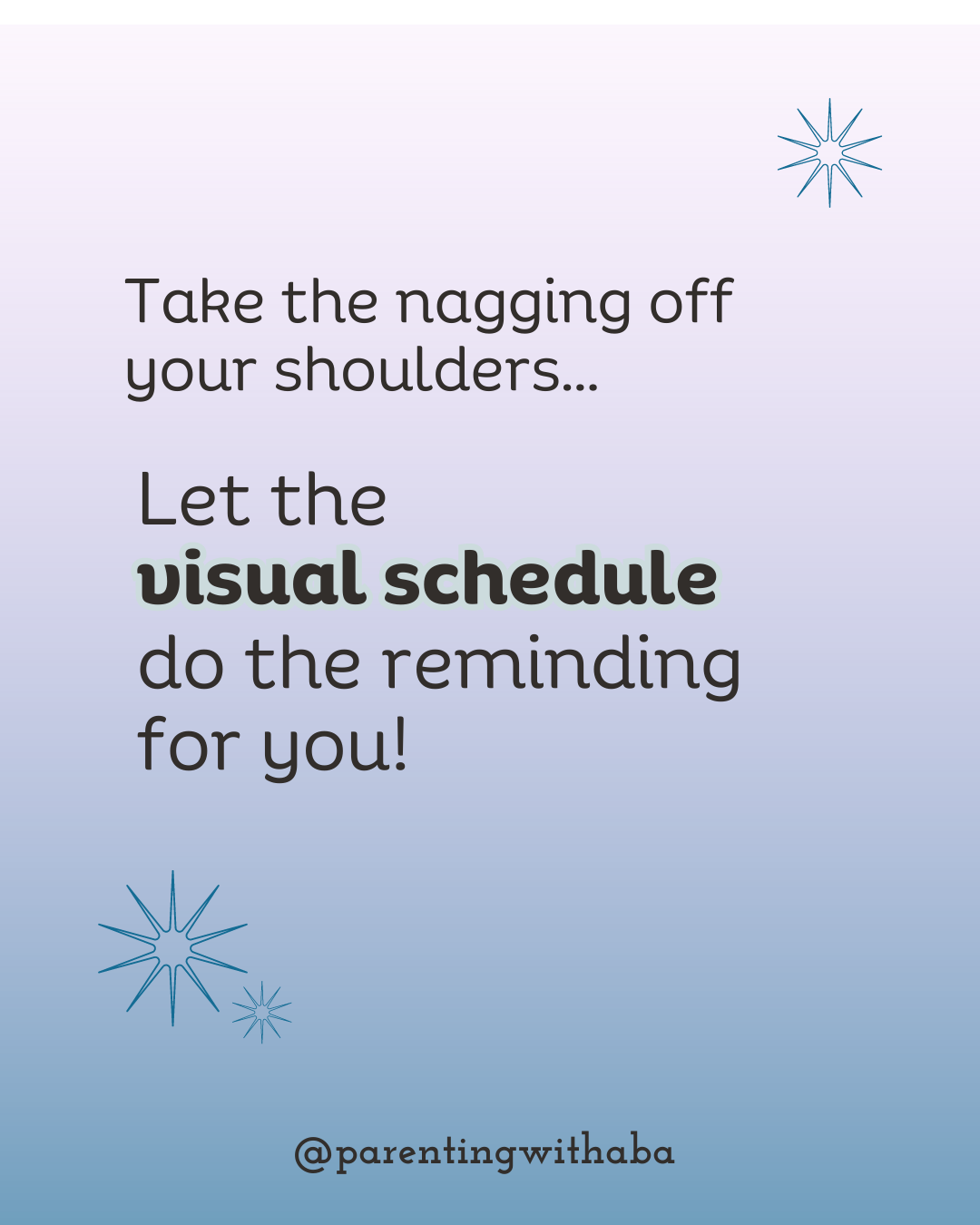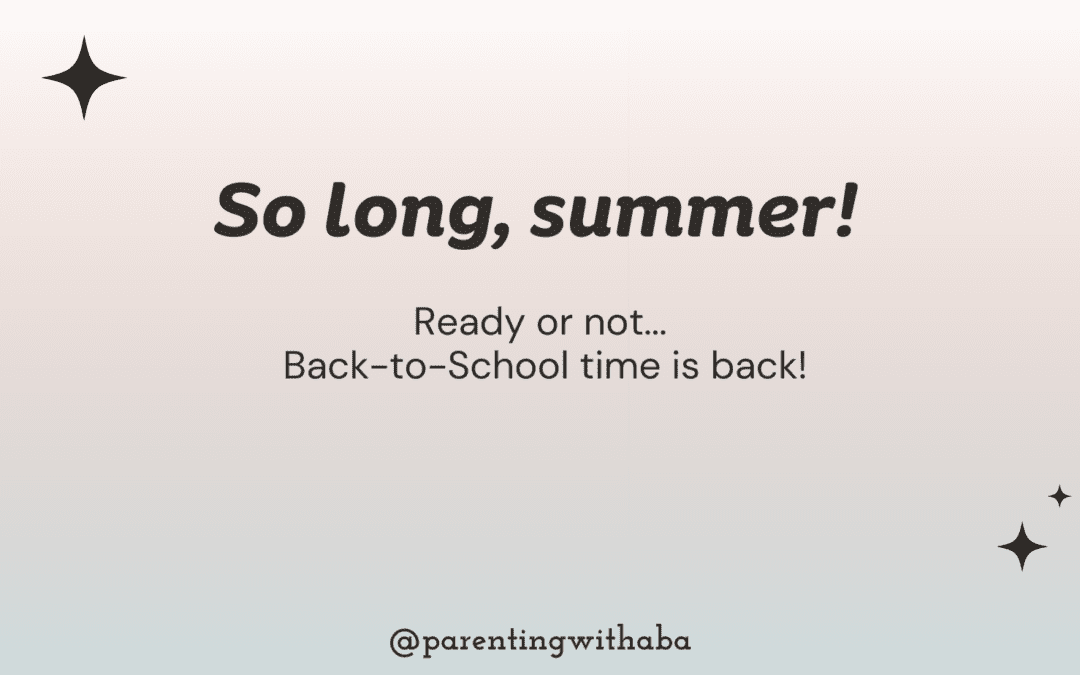Back to school time is back- ready or not. This time of year can bring happy, nostalgic memories for those of us who love school supplies. Do you remember the line in You’ve Got Mail where Tom Hanks messages Meg Ryan saying, “I would send you a bouquet of newly sharpened pencils if I knew your name and address,” ? (That gives me warm fuzzies!)
But back to school time also means transition; it means change. And change is hard!
As a behavior analyst, a parent coach, and a mom of elementary school aged kids, these are two of my favorite behavior tools to ease that back-to-school transition:
- Routines
- Visual schedules
Let’s start by talking about routines…
Those things we do every day? If we do them in basically the same order, the same way, then it’s a routine. Making routines consistent makes them easier to remember. Making routines easier to remember can lead to less nagging from mom, more independence for the kids.

What routines do we need to tighten up for back to school?
Mornings, right after school (when first getting home from the day), and bedtimes!
If you do them a little differently every single time, that inconsistency can actually make it harder for your kids. You make think you’re being a more laid back mom who goes with the flow, but in this instance your kids need the structure to count on, to lean on, to know what to expect.
Now it’s time to figure out what you want your routines to look like…
Figure out things like:
1. What time does mom need to get up in the morning? What time does each kid need to get up in the morning in order to get to school on time?
2. What types of breakfast foods will we have available? How long do they take to prepare? To eat?
3. What order of getting ready makes the most sense? Consider the layout of your home here. For example, if you have a 2-story house no one is going to want to go up and down the stairs multiple times. Do all the upstairs things FIRST or move some of the stuff downstairs (like hair supplies, toothbrush, etc.)
4. What will be available after school? Snack first to defend against hangry people? Are we doing screen time after school? Does that help kids to decompress or will turning screens off lead to power struggles? How long for screen time? When should we do homework?
5. What time is an appropriate bedtime for my child’s age? What time is reasonable with the extra curriculars we have planned? How can I make this time earlier when needed (like the first week or 2 of school)?
6. What is a logical order of bedtime routine that maximizes the space in your home- Does keeping things physically close by help to make it easier?
Once you have an idea of what your family’s routine will be, include the kids to make a visual schedule.
If you have flexibility in the order, then you can make it with separate pictures for your kids to arrange in order each day- giving your child more control over their own day to day routines. Most kids like this control since there is not a lot they get to be in charge of in their little world!
Let your child(ren) decide if they want pictures or words. If they are readers, they might actually like pictures better because they are cute or fun or easier to process than reading words on a routine schedule first thing in the morning.

You can make the visuals for them, but here we are back at your kids not getting to be in charge of a whole lot in their little worlds… So let them be in charge!
It’s empowering to have a little autonomy, even over something that feels simple like a morning routine visual schedule. And it helps to get them to buy into this idea of following a new morning routine!
Ways you can help your child make a visual schedule:
1. Canva.com – The free version is 100% capable of making an awesome visual schedule. Start a blank “letter”. That way it prints on a normal piece of printer paper. Choose elements from the left menu. Type in whatever you are looking for: toothbrush, breakfast, clothes, shoes, etc. Then click graphics and let your child choose. For my own kids, we talked about the list, and I wrote down the words to search and walked away. Their two visual schedules were VASTLY different, and I love that each of their personalities shone through on such a simple exercise.
2. Take photos in your house. Take photos of your child doing each step of the routine. Make this a fun photo shoot activity any time other than when you are doing the routine in your real life! Print these and put them in order.
3. Use other computer based resources- Google images, PowerPoint, Google slides- whatever you are familiar with!
4. Let your child draw them. If your child likes to draw, and you can tell what it is they have illustrated, let them draw their routine steps.

Hang the visuals where you need them.
When your child is getting ready in the morning- where are they? Bedroom? Bathroom? Kitchen? Hang a copy of the routine visual schedule there.
Then instead of nagging them to do the steps, you can point to the visual or say, “Check your schedule,” or “What comes next? Go check.”
Take the nagging off your shoulders and let the visual schedule do that reminding for you!
After you’ve used this routine for a bit, pause and notice if it’s actually the most functional for your family.
Is it working for you? If not- tweak it! Modify it! Consistency is important. Using visuals is helpful. However, you are not married to one particular visual routine if it isn’t working or something about it needs to shift. Change it up to make it work FOR you and your family – so you all can be consistent and successful with it!
To summarize all this for you:
- Figure out your important daily routines.
- Involve your child to make it visual.
- Use your visuals.
- Modify as needed.
- Celebrate your wins as an amazing parent who is so smart to use visual schedules!
And know that I’d send you a bouquet of school supplies if I knew were you lived. Just like Tom Hanks.
Happy back to school time!
Want to get started using visual schedules to help make back-to-school time less stressful and more fun for your family?
Check out my Back to School Visuals for Home by clicking here!
This back-to-school bundle has you covered with visuals, printables, behavior tools, and more to help ease the angst of transitioning back into the school routine.

Recent Comments